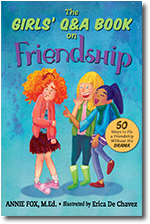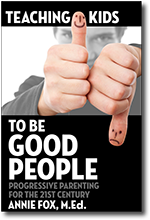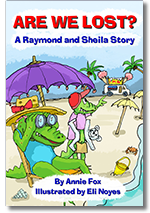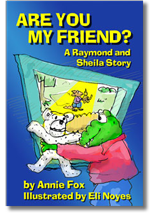|
|
September 16, 2015
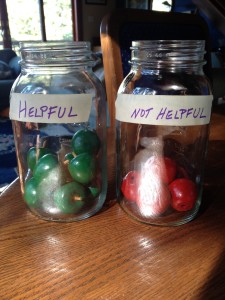 Was that really helpful or not so much? Imagine two empty glass jars. One labeled Helpful. One labeled Not Helpful. Imagine each time you say something to someone (online or off) you must put a marble in one jar or the other. By the end of the day which jar has more marbles?
Getting along with each other has always been a major challenge on this planet. Each day, each of us has the power to increase hostilities or increase feelings of friendship and cooperation at home, at school. Everywhere. It’s really that simple.
Think about the two jars with this hypothetical situation:
A group of kids sit at a lunch table with one empty seat. A new kid comes over carrying a lunch tray and asks “Can I sit here?” For each choice, which jar gets a marble, Helpful or Not Helpful?
Someone says “No way!” H or N
New Kid throws a french fry at someone. H or N
Someone lies and says, “Sorry, but I’m saving this seat for my friend.” H or N
New Kid lies and says, “No problem.” H or N
New Kid says, “I don’t want to sit with you. You’re mean.” H or N
Someone says “Sure” and makes room. H or N
Someone frowns but doesn’t move. H or N
Someone quickly puts her sweater on the empty seat. H or N
Someone says, “No weirdos at this table.” H or N
Someone laughs. H or N
Someone feels bad, but says nothing. H or N
Someone says, “Don’t be mean. Let her sit with us.” H or N
Someone whispers, “Why can’t she sit here?” H or N
Someone shrugs and says nothing. H or N
Someone pretends to text. H or N
Someone from another table and invites New Girl to sit with them. H or N
Now count your marbles. How many in each jar? What would you personally do in this situation? Not sure? That’s honest. Think about it some more. I understand this isn’t an easy question. Talk to your children. Your partner. Encourage your kids to talk to their friends. Share the idea of the two jars with them. We all agree that everyone wants to be treated with kindness and respect. That’s so clear. But when it comes to how we treat others, moment to moment, not so clear. Which jar are filling up today?
NOTE: I’m leading a series of Girls’ Friendship Without the Drama Workshops for the Girl Scouts and anyone else who wants to get a group of 15+ together to learn to be more helpful.

September 2, 2015
 Can you guys tell me how to use this thing? Your kids might not have gotten a summer break from social media, but even if they did, they’re probably back on it now… in force. With all the time spent interacting with people they know and people they don’t, how do we teach them to play nice?
I use the word “play” because social media is the biggest unsupervised playground in the world. When kids run around on any playground, with no rules or supervision, kids will get hurt… by other kids. It’s the same with social media. Kids as young as eight and nine run amok and use a keyboard as a weapon to show off, to spout off, to grab attention, and to get back at other kids.
We all like to think of ourselves as responsible parents, right? Responsible parents teach their kids the rules of behavior for different situations. We do it to keep our kids safe and to make sure they don’t hurt anyone or trample on anyone’s rights. Before we give a teen access to the family car we make sure s/he knows the rules of the road and has demonstrated proficiency. It’s the same with social media. When we give a child access to social media via any device, we need to provide rules and oversight. But in this relatively new arena it can be challenging to know exactly how to parent responsibly. Maybe that’s why many parents seem checked out. Who knows? Maybe they’re thinking, “How am I supposed to tell my kid how to use it? She knows more about this tech or that app than I do! I don’t even know how to upload video!” That excuse doesn’t cut it. As parents we’re the ones responsible for raising good digital citizens. The only effective way to do that is to make it super clear to our kids that whatever standards and expectations we have for their behavior in face-to-face situations are the same when they’re texting a friend or roaming the vast social media playground.
We need to do this because kids are kids. They are immature socially and undeveloped cognitively. They have trouble connecting the dots here. They assume because they are alone with their phone and there is no one else around, they can’t be pegged for anything they do. It’s like hit and run. It’s like drone warfare! They press a button and because they can’t see the suffering they’re causing they somehow believe they did no wrong or they find ways to justify their actions. (“I didn’t start it!” “I wasn’t the only one.” “He did much worse to me!” ) They need us to teach them that their choices matter, online and off. Without our guidance, not only will they continue hurting other people, they are hurting their own reputations. They are also building up an inventory of bad deeds. When that happens it can change a child’s perception of the kind of person he or she is.
So as this new school year kicks off, I encourage you to take a look at The Parents Pledge to Raise a Responsible Digital Citizen. Go over it with your kids before you give them access. And if you’ve already given them access, then you need to pedal back a bit and say, “We’ve got to talk about some rules here, because I need to know that the choices you make whenever you express yourself or communicate in any way, always reflect the good person you really are.”

August 21, 2015
 “Why doesn’t she want to be my friend anymore?” Today’s question comes from the mom of a 12-year-old who is feeling her daughter’s pain at being rejected by a long-time bff.
How can I help my daughter deal with rejection? Her friend of six years has a new best friend. My daughter is hurt and desperately trying to win her friend back. What can I do to help her accept that sometimes friends move on?
Rejection comes up a lot in life, so we get lots of practice dealing with it. Either we didn’t get chosen for the team or didn’t get into the school we wanted or didn’t get the job we interviewed for. These are as “institutional” rejections. They sting, but at least they are not truly personal. This 12-year-old is grappling with a very personal form of rejection, being ditched by a close friend who has moved on into the embrace of a new bff. Ouch!
When we talk to our kids about feelings of rejection it’s important to give them a chance to talk about it. “I feel bad! What did I do wrong? Why doesn’t she want to be my friend any more?!” These aren’t necessarily questions that require answers from you. A child asking these questions is most helped by a parent who listens with compassion and patience and understanding. But when this girl talks to Mom about “trying to win her friend back” that is when a parent ought to do more than listen and empathize.
The daughter seems to believe she can change her friend’s mind. Mom can help by providing a reality check (compassionately, of course). Mom needs to tell her there are certain things in life that we can control and certain things we can’t. In the area of what we can’t control: the thoughts, feelings and behavior of other people. In the area of what we can control: our response to what’s going on inside and out.
If someone were to kick me in the shins, I’d yell “Ow!” because it hurt. If someone says, “I don’t want to be your friend” that’s going to hurt, too. But how long will it hurt? And how many times will I play over in my mind those hurtful words? If I’m a healthy, resilient child or adult, I won’t replay it much. Why re-hash something when the hash didn’t taste great to begin with?
Talk to your children about the concept of re-hashing negative thoughts and mental movies. Then say to your child, “Sweetheart, you already have what it takes to be a good friend. You were Emma’s best friend for six years! And that is a great accomplishment. But friendships don’t always last forever.” Now would be a good time to remind your child of the friend she was close to in preschool or third grade who, now in sixth grade, is no longer a close friend. That might help her understand the evolution of feelings and friendships.
My best advice for helping children dealing with rejection:
a) Let kids express how they feel without your interrupting, correcting, or invalidating those feelings.
b) Prompt kids to think and talk about what, if anything, they might have done to contribute to the rejection. Relationships are a two-way street and it’s good for them to acknowledge what they might have done or failed to do to keep the friendship healthy and strong.
c) Brainstorm with kids about how they might respond next time they are rejected. It’s important for them to recognize they always have options in the way they behave.
d) Encourage them to think about a candidate who might become their next best friend.
These conversations will empower your child. It will also strengthen your bond and help your child become more resilient.

August 4, 2015
 Cooking + eating together = family fun. I watch a lot of competitive cooking shows (Chopped, Beat Bobby Flay, Next Food Network Star. And Top Chef (Which has been where?! Can anyone please tell me?) In between slicing, dicing and schvitzing, contestants often give loving shout-outs to Mom or Grandma for turning them on to cooking. Kids need to learn to feed themselves, so we’ve gotta teach them to cook. Where to start? How about something simple that doesn’t require sharp knives and fire?
Today’s question comes from a parent who is ready to hand over some kitchen duties to her children.
How can I get my kids to make their own school lunches?
It’s almost back-to-school time and lunches must be made, but not necessarily by you and you alone. So, how can parents effectively get kids to make their own lunch or at least start engaging them in the process? If you think about the developmental stages of childhood, there are many things we do for our kids before stepping back. I’m thinking… teaching kids to feed themselves, get their own drink of water, take themselves to the bathroom, tie own their shoes (Do kids’ shoes even have laces anymore?) We show kids how, we help them while they’re learning, then we sit back and let them do it. Or we should.
So what is the barrier to teaching kids to make their own school lunch?
Our attitude determines how comfortable our kids feel about working in the kitchen vs just showing up to be fed. Do you feel that food prep, cooking, etc. is something your kids should be doing for themselves? If not, then they probably won’t either. Kids are human. I have this on good authority. We tend to be lazy. If someone will do something for me, on a regular basis and to my satisfaction, then why the heck should I bother doing it myself? “I have enough to do,” thinks the child. “I have to wake up on time every morning and brush my teeth and get dressed for school. I have a backpack that needs to be packed and… ”
OK, lots for the tykes to master before they graduate from high school. But let’s not get overwhelmed here. Let’s refocus on the original question about school lunch.
Food is wonderful. So is eating. You can engage kids in the process of making lunch by talking about what they like and don’t like to have for lunch and why. Talk about nutrition and why certain foods are going to help them do their job as a student better than others. Involving kids in the process of shopping for food, prepping food, and even growing food is a great way to start putting them in the driver’s seat. And who knows? They may want to start making their own breakfast soon, too. And after that? They’ll make meals for you!
Before you start, make sure hands are washed and that everything is accessible and at their level. Before they cut anything, make sure you teach your kids the safe way to use cutting tools in the kitchen. It goes without saying that all the utensils you give them are safe for their age-level. OK. I said it anyway.
And make sure you up the fun-ativity quotient from the start. Make food prep fun. (Being in the kitchen with a hypercritical parent is not fun.) Offer lots of praise for progress and back off little by little. You’ll soon hear your child crowing, “Hey, Mom! I made my own lunch!” At which point you offer high-fives all around and say, “Can I have a bite? Mmmm… delicious.”
Remember, we are here to teach our kids to become fully-functioning independent young adults and making your own food is definitely part of being independent. So… what’s for lunch tomorrow?
 — Older Posts »
| |








